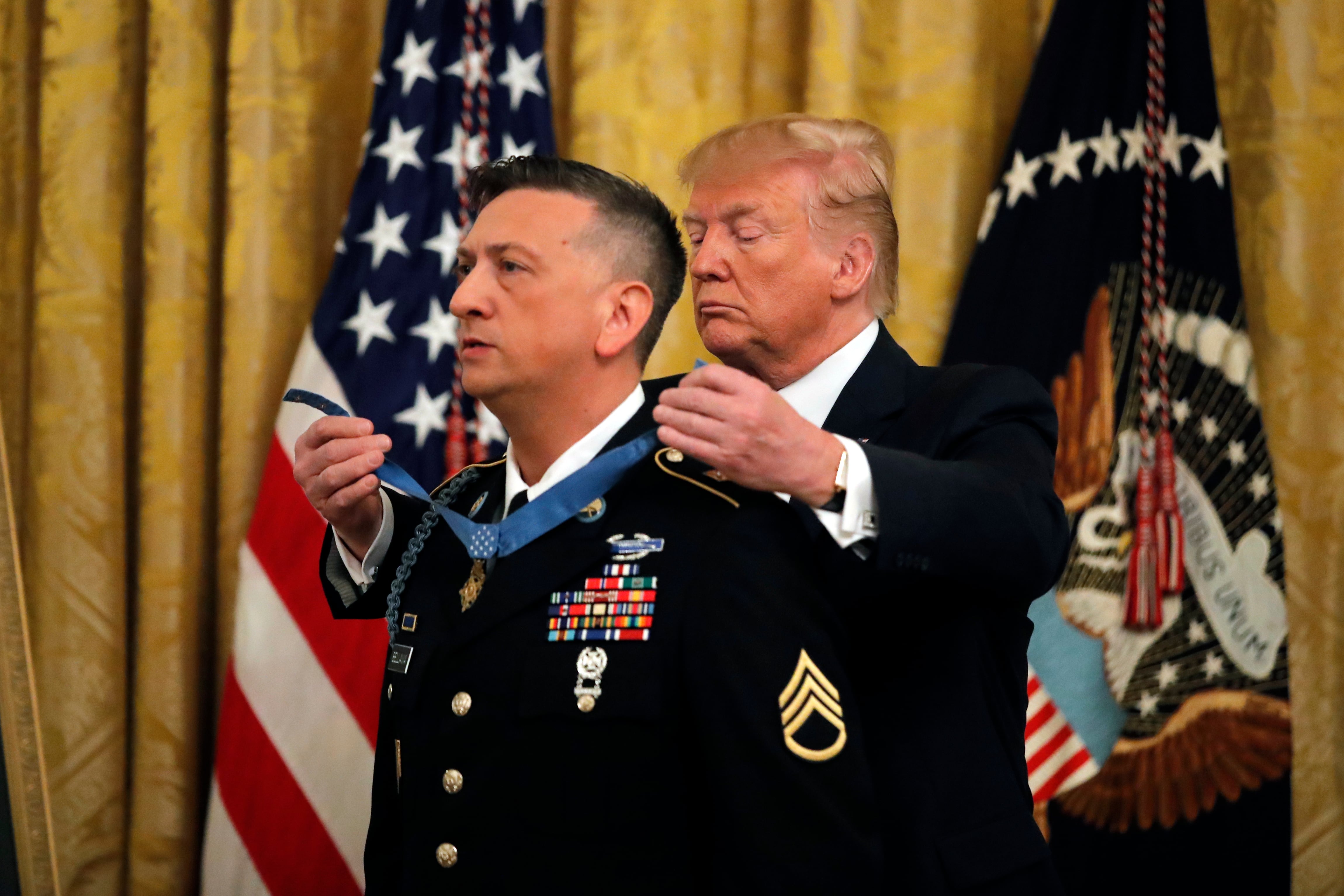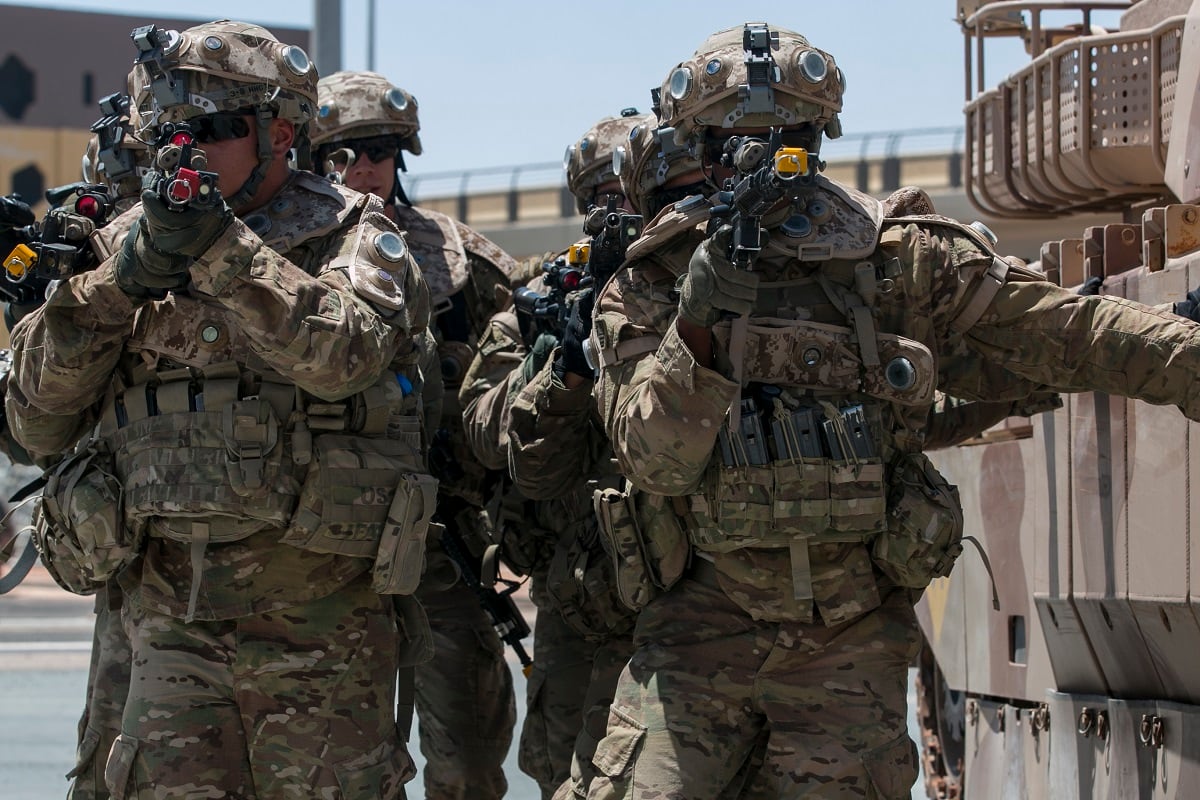Last month former Staff Sgt. David G. Bellavia became the Iraq War’s first living Medal of Honor recipient.
The details of the extraordinarily brave event read like every soldier’s nightmare. A “house of hell” filled with enemy insurgents prepared to die in almost every room. Sergeant Bellavia and his fellow soldiers were outgunned, overmatched — disadvantaged in every respect. That was the sad state of American military capabilities in 2004. But the reality is that if today’s military was placed in a similar battle, little would be different.
RELATED

Bellavia’s “house of hell” was just one of the hundreds of similar houses that soldiers and Marines faced during the Second Battle of Fallujah in November of 2004. They actually cleared over 30,000 houses in that city. Each time they were unaware if they were entering a death trap or an empty structure. Enemy forces had cheap but more powerful rifles and rocket-propelled grenades. They had fortified bunkers in concrete houses that most American weapons could not penetrate and the enemy knew it would take suicidal room-clearing assaults and ultimately the destruction of the city to eject them.
Cities give anyone with minimal weapons and determined fighters the ability to contest and, in many cases, tactically defeat a more powerful force. Urban terrain gives the defender the advantage of turning every building into either a sniper attack position, ambush site, or death trap. It allows them to hide both within the concrete jungle and the civilian population. The terrain breaks up an attacking force, minimizing their ability to use advanced technologies, or even basic fire and maneuver tactics.
RELATED

The United States can see, track and drop a precision-guided bomb on just about anyone or anything in the world. But it is these capabilities that has driven enemy forces around the world into densely populated urban areas. Recently, the Islamic State group captured and infested large cities in Iraq like cancers that had to be cut out. To do so, the Iraqi military (trained and equipped by the United States for over a decade) destroyed hundreds of thousands of houses through intense house-to-house combat worse than Fallujah in 2004. Every bad guy in the world watched and learned — if you want to fight a military, even the U.S. military, get into the cities and make them pay.
One of the objectives of U.S. military power is to be so strong, so capable, so lethal, that they strike fear in opposing forces. This deterrent effect works from the nation state level down to the individual bad guy. We want the world to fear the U.S. military at every level. From our nuclear arsenal to our individual soldiers. We want would-be enemies to fear the involvement of the American forces in any decision they might make. It is the backbone of the international order for American military forces to carry the biggest stick.
The annual Department of Defense budget is over $700 billion. We will spend $90 million per plan for new F-35 fighters, $10.2 billion for three new submarines, and may spend up to $2 billion to create a new organization to fight in space, but there are no major marked resources for urban combat. Even if there’s concern, there’s no denying we already dominate in air, sea and space. But inside a building and in a city, we don’t dominate, and the grisly proof is available in Bellavia’s Medal of Honor citation. There are no Manhattan Projects to change the one spot where the U.S. military does not dominate. Actually, there isn’t a single office in the military dedicated solely to urban combat. No major urban combat schools. There are really only two urban combat training sites in the country that can hold more than a hundred soldiers.
The lack of investments and efforts to equip U.S. forces for urban combat are why Sergeant Bellavia couldn’t see inside the building he attacked. Why he couldn’t distinguish from enemy and civilian personnel inside the building? Even if he could have seen inside the building, he did not have a weapon that could penetrate the concrete walls protecting the enemy. When he did request a tank-like vehicle engage the house with a large machine gun, the enemy inside remained mostly untouched. He didn’t have tear gas to clear the building because the United States signed a treaty to no longer use this nonlethal tool. His only remaining choice, and that of a soldier today, was to run inside the house and fight each enemy individual at close range.
Without investment and new ways of thinking, our soldiers will neither dominate nor be feared in urban combat. At today’s pace, the age of “Iron Man” Tony Starks busting through walls, impervious to enemy bullets, capable of seeing and engaging bad guys in any dark space they may be hiding isn’t coming anytime soon. The U.S. military may be the world’s greatest force in air, sea and space. But where the nation’s hardest fighting really takes place — urban combat — that’s not the case. Consequently, Sergeant Bellavia’s experience in the “house of hell” is bound to happen again.
John Spencer is a former infantryman and officer that spent over 25 years in the Army, including two combat deployments to Iraq.





